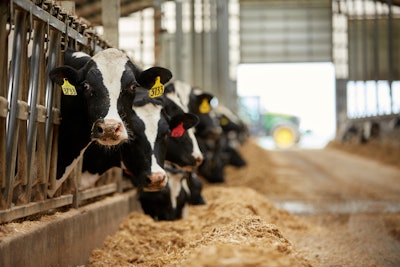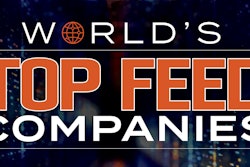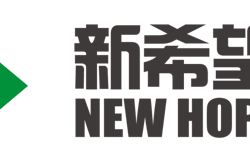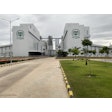
The Italian animal feed market is experiencing difficulties, as a lack of raw materials and ever-growing production costs put serious pressure on the industry and its major players.
As is the case with the feed market across the majority of other European states, the Italian feed industry was severely impacted by the hostilities in Ukraine, which led to increasing costs of raw materials, difficulties with their procurements, and a sharp rise of gas and energy costs. Sustained high energy costs have also created serious problems for manufacturers.
According to latest data, presented at the annual assembly of the National Association of Animal Feed Producers (Assalzoo), which was held at Bocconi University in Milan in June, the overall 2022 volume of animal feed production in Italy declined by 4.3% to 14.96 million tons, compared with 2021, a year that had set a production record with a peak of 15.6 million tons.
On the other hand, despite the decline of production, the actual turnover of the industry increased up to EUR12 billlion (US$13.1 billion) (+23% year-on-year), due to the rise of inflation, caused by high production costs.
According to analysts, the increase in turnover represents a positive element only on paper as, according to the experts of Assalzoo, the feed industry has had to deal with an increase in overall production costs that are much higher than overall turnover growth.
Avian influenza is one of the reasons the poultry farming sector in Italy declined. According to official statistics of Assalzoo, the animal feed output for poultry decreased by 10.5% when compared with 2021, from 6.372 to 5.705 million tons.
Poultry farming represents the main sector of feed production, which occupies almost 40% of total Italian production in 2022. At the same time, the decline in the pig farming sector was only 1.4%, while the beef sector demonstrated 1.3% growth, up to 3.7 million tons.
Raw material struggles
The lack of raw materials in recent years has become one of the most pressing problems for the Italian animal feed sector. In recent months, the situation has become even more complex, while industry players are in search for alternative sources of raw materials.
With corn and soy in short supply on international markets, it leads Italian feed producers to compete for waste from wheat processing and distilleries with the bioenergy industry.
As Assalzoo president Silvio Ferrari recently explained in an interview: "Today, the byproducts of agro-industrial processes make up a third of the ingredients that make up our feed. If we wanted to increase their share, we would have to compete for the raw material with those who produce bioenergy. These are fierce competitors and are also well supported by state subsidies. The government will have to help us divert waste towards our industry."
Despite the ever-growing popularity of various alternatives, corn and soy remain the two main ingredients for animal feed in Italy. However, the lack of their domestic production leads to the fact that the current dependence on imports is high.
"Two years ago, Italy produced 50% of the corn it needed. Last year, also due to the drought, there was a drastic drop, and now we are only 30% to 35% self-sufficient, and the other [65% to 70%] comes from Eastern Europe," said Giulio Usai, economic manager of Assalzoo.
In the case of soy, although Italy is the largest European soy producer, the national harvest is able to guarantee only 700,000 of the 3.6 million tons needed each year. The rest comes from South America.
"The soy, in the form of flour, is almost all from Argentina, while those in the form of seeds is almost all Brazilian, and practically all GMOs, — just as the EU has authorized to do since 1996," said Usai.
Due to the drought in Argentina, corn prices in Italy significantly grew this year (and reached almost EUR400 per ton). While in recent months prices have declined, they still remain on the high level. That creates big problem for Italian farmers.
"With the sharp rise in raw material prices, many of Italian farmers who previously bought the commodities and ingredients to prepare their own feed rations have began to switch towards finished feed," Ferrari said. "This is not a completely negative scenario for feed producers, as it leads to the increase in their turnover and profit margins which, with the boom in raw materials and the cost of energy, have significantly thinned out."
Investment in dairy
In the meantime, the Italian market has been traditionally within the sphere of interests of major global agrifood businesses, most of which traditionally consider it as one of the most promising markets for their growth.
Cargill, for example, has significantly strengthened its presence in the Italian animal feed sector in recent years.
According to Gustavo Napoli, the commercial director for Cargill Animal Nutrition & Health’s ruminant business in Italy, "Cargill’s primary focus for the animal feed market in Italy is growth," with particular interest in emerging dairy farmers.
"We are committed to supporting dairy farmers in their growth with nutritional solutions," Napoli said. "As part of this, we have developed a new line of feeds for automatic feeders used in robot milking and have launched a new solution for young calves’ nutrition to support one of the key activities in dairy farming: replacement heifers. On a separate note, the company currently produces feeds for dairy cows whose milk is made into Protected Designation of Origin Italian cheeses."
Napoli expects the demand for dairy feeds in Italy will remain strong as the demand for Protected Designation of Origin Italian cheeses continues to grow, providing additional opportunities for growth for the company in this market segment.

















